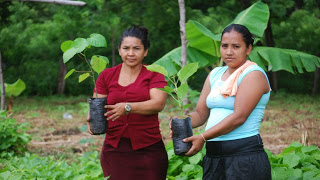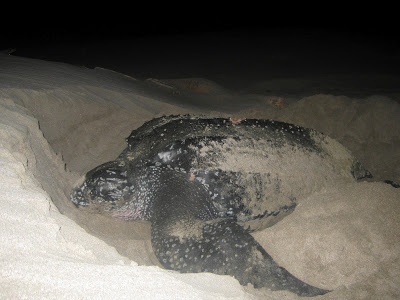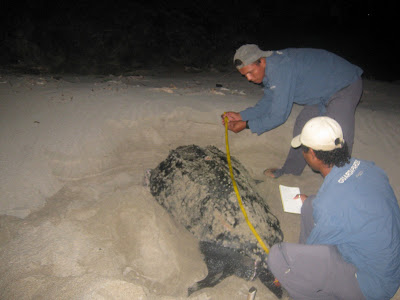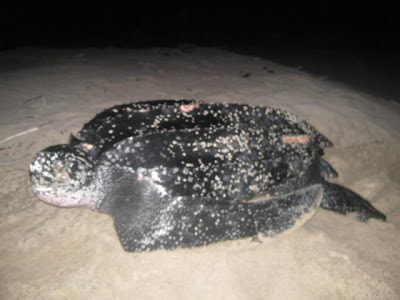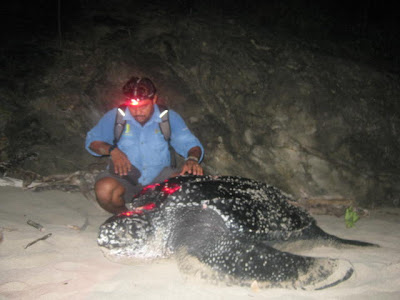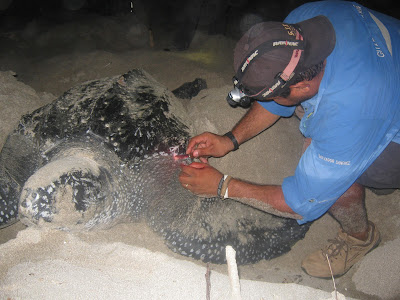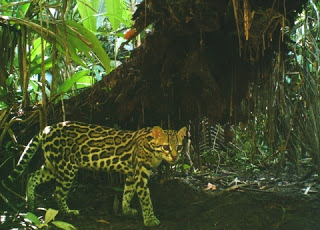Thank you to everyone who has voted for our ELLAS program in the NatGeo Ashoka Changemakers Geotourism Challenge. We appreciate all the support!
La iniciativa “ELLAS” que promueve el Organismo No Gubernamental Paso Pacífico, el cual fue escogida por Geotourism Challenge 2010, auspiciado por National Geographic, Ashoka Changemakers y Banco Interamericano de Desarrollo, como uno de los 12 finalistas entre más de 250 participantes de diferentes países del mundo, lo que permite visibilizar el rol de la mujer nicaragüense en un tema de vital importancia para el país, como explicó Liza González, Director Nacional de Paso Pacífico.
The Environmental Learning, Leadership, Adventure, and Stewardship Initiative (ELLAS) por su siglas en inglés, es un programa que da liderazgo a mujeres para colaborar en la protección del Refugio de Vida Silvestre La Flor, San Juan del Sur, Rivas, a través del turismo sostenible para darlo a conocer como un destino conocido a nivel mundial en la práctica del geoturismo.
If you haven’t yet voted, you may do so here: http://www.changemakers.com/
From Kim Williams-Guillén, our director of conservation science:
There are other smaller caves in Masaya. Park rangers know where they are. I have been to only one, which was a cave with a large colony of vampire bats. In the video (also from April 2009) if you look carefully you can see some females with babies hanging on their chests. Many tropical bat species are capable of reproducing throughout the year, although many will have peak reproduction in the rainy season when fruits and insects are most abundant. To my knowledge, these bats are found in the caves throughout the year. In the dry season, however, bats are easier to spot as they are attracted to pools of water where they come to drink.
From Kim Williams-Guillén, our director of conservation science:
This is a video I filmed of nectar bats feeding on a jicaro tree in Montibelli private reserve, which is about 30 minutes from Masaya. This video was filmed in April 2009. It’s easiest to watch nectar bats in the dry season (January through April) since that is when many of the tree species in the dry forest flower.
Last night our turtle rangers spotted a Leatherback sea turtle nesting on Playa Brasilon. They watched over her while she deposited 78 eggs in a nest which they will guard.
Because the Pacific Leatherback is very close to extinction, we are happy to start the new with this, our very first leatherback nest on Brasilon Beach.
La Prensa has a preview of the newest installment of Survivor, filmed in the Paso del Istmo where we work:
“Las playas en la costa sur del Pacífico de Nicaragua se convertirán en el nuevo escenario de Survivor…
“El programa consiste en filmar la vida cotidiana de 20 concursantes que competirán por sobrevivir en las playas de San Juan del Sur, en el departamento de Rivas…”
The beaches of Nicaragua’s Pacific coastline will become the setting of the newest edition of Survivor…
The show will follow the daily lives of 20 contestants as they compete to survive on the beaches of San Juan del Sur in Rivas.
We hope as the world turns to watch and see the natural beauty of Nicaragua, they’ll join us in working to create a culture of conservation.
We’ve just received this trailer for a forthcoming documentary on “the tumultuous topic of land ownership and development in politically volatile Nicaragua” in the year 2006 (and leading up the Ortega’s re-election in 2007).
“The only thing we have is land,” says a man at the outset.
In a story of tourism vs. terrorism, one is never quite sure who has the upper hand nor if anyone is telling the honest truth.
It’s feature length and it should be interesting.
Our friends at Fauna & Flora International have spotted a rare albino howler monkey baby on Nicaragua’s Ometepe Island. Yes, they have a photo on their website!
On Flickr: Another slideshow with more photos from Liz Mering’s recent trip to Nicaragua.

This set is courtesy of Suzanne Hagel and Bill Noble.

